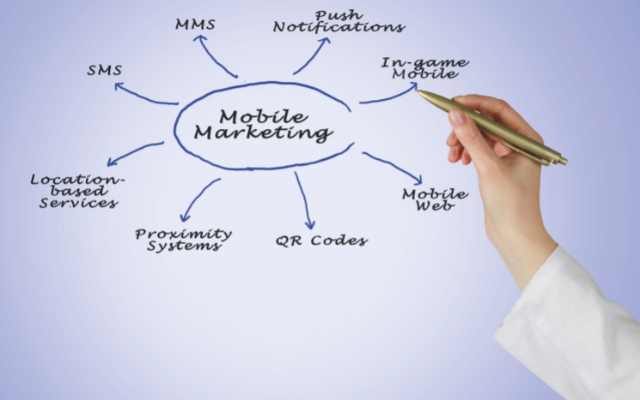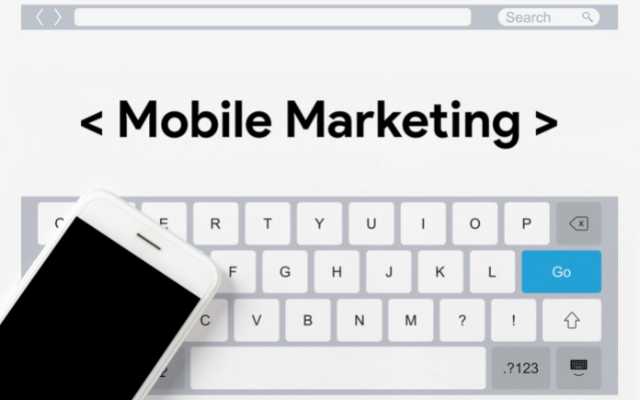Email Us : contact@sprginfotech.com
Mobile marketing has become an essential component of today’s digital landscape. With the rise of smartphones and mobile devices, more and more people are using mobile devices to access the internet and interact with businesses. In this article, we’ll take a look at the role of mobile marketing in today’s digital landscape.
The Role of Mobile Marketing in Today’s Digital Landscape
- Reach a wider audience: Mobile marketing allows businesses to reach a wider audience than ever before. With mobile devices being so prevalent, businesses can reach customers who are on the go, at work, or at home.
- Enhance customer engagement: Mobile marketing can help businesses enhance customer engagement. By using mobile devices, businesses can communicate with their customers in real-time, providing them with relevant information, offers, and promotions.
- Deliver personalized content: Mobile marketing allows businesses to deliver personalized content to their customers. By collecting data about their customers’ preferences, businesses can deliver tailored messages that resonate with their audience.
- Offer location-based marketing: Mobile marketing can also provide location-based marketing. By using technologies such as GPS and beacons, businesses can target customers with offers and promotions based on their current location.
- Improve customer experience: Mobile marketing can help businesses improve the customer experience. By providing a seamless mobile experience, businesses can create a positive impression on their customers and make it easy for them to interact with the business.
- Drive sales and revenue: Mobile marketing can drive sales and revenue for businesses. By providing customers with relevant offers and promotions, businesses can encourage customers to make purchases and drive revenue.
What Is Mobile Marketing?
Mobile marketing refers to any marketing activity that is conducted through mobile devices such as smartphones and tablets. This can include a range of tactics such as SMS messaging, mobile applications, mobile search ads, mobile display ads, and in-app ads.
Mobile marketing is becoming increasingly important as more and more people are using their mobile devices to access the internet and engage with businesses. In fact, mobile devices now account for the majority of internet usage worldwide.
Mobile marketing can offer a range of benefits for businesses, including the ability to reach customers on the go, deliver personalized content, and provide a seamless customer experience. By leveraging the power of mobile marketing, businesses can connect with their target audience in real-time and deliver relevant messages that resonate with their customers.
However, it’s important for businesses to take a strategic approach to mobile marketing and understand the unique challenges and opportunities that come with marketing through mobile devices. This may include optimizing their website for mobile devices, developing mobile-specific content, and using mobile-specific advertising tactics.
Overall, mobile marketing is an essential component of today’s digital landscape, and businesses that invest in mobile marketing can gain a competitive edge and drive growth for their business.
Types of mobile marketing
Mobile marketing is a type of digital marketing that targets consumers on their mobile devices, such as smartphones and tablets. There are several types of mobile marketing, including:
- SMS Marketing: SMS (Short Message Service) marketing involves sending promotional messages, special offers, and updates via text messages to a subscriber list. It’s a highly effective way to reach consumers with time-sensitive messages.
- Mobile Apps: Mobile apps are software applications that are designed to run on mobile devices. They can be used to promote a brand, sell products, provide customer service, and engage with customers.
- Mobile Web Advertising: Mobile web advertising involves placing banner ads or pop-up ads on mobile web pages. The ads can be targeted based on location, demographics, or user behavior.
- In-App Advertising: In-app advertising involves placing ads within mobile apps. The ads can be targeted based on the user’s behavior and preferences, and they can take the form of banner ads, videos, or interactive ads.
- Location-Based Marketing: Location-based marketing uses a mobile device’s GPS or other location data to deliver targeted marketing messages to users based on their current location. This can include push notifications, offers, and recommendations based on nearby businesses and services.
- Mobile Video Advertising: Mobile video advertising involves displaying video ads on mobile devices, either within apps or on mobile web pages. The ads can be targeted based on the user’s interests, behavior, and location.
- QR Codes: QR (Quick Response) codes are scannable codes that can be printed on marketing materials, billboards, or product packaging. When a user scans the code with their mobile device, they are directed to a specific landing page or promotional offer.
By leveraging these different types of mobile marketing, businesses can reach their target audience on their mobile devices and engage with them in meaningful ways.

How Does Mobile Marketing Work?
Mobile marketing works by leveraging mobile devices such as smartphones and tablets to deliver marketing messages and engage with customers. Here are some of the ways mobile marketing works:
- SMS Marketing: This involves sending text messages to customers’ mobile phones. SMS marketing can be used to deliver promotional offers, event invitations, and other types of messages.
- Mobile Applications: Businesses can create mobile apps that customers can download and use on their mobile devices. These apps can be used to deliver content, promote products and services, and facilitate customer engagement.
- Mobile Search Ads: Mobile search ads are displayed when users search for keywords on their mobile devices. These ads are designed to be relevant and useful to the user, and can include a call-to-action to drive conversions.
- Mobile Display Ads: These ads are displayed on mobile websites and apps. They can include images, videos, and interactive elements, and are designed to capture the user’s attention and encourage engagement.
- In-App Ads: These ads are displayed within mobile apps, and can include banners, videos, and other types of content. In-app ads can be targeted based on user behavior, location, and other factors.
Mobile marketing can be an effective way for businesses to connect with customers on the go and deliver personalized content that resonates with their audience. However, it’s important for businesses to take a strategic approach to mobile marketing and understand the unique challenges and opportunities that come with marketing through mobile devices. By leveraging the power of mobile marketing, businesses can reach a wider audience, drive engagement, and achieve their marketing goals.
- How to Use Influencer Marketing to Grow Your Business
- The Power of Video Marketing: Why Your Business Needs It
- The Benefits of Content Marketing: Why Your Business Needs It
Conclusion
Mobile marketing plays a critical role in today’s digital landscape. By reaching a wider audience, enhancing customer engagement, delivering personalized content, offering location-based marketing, improving the customer experience, and driving sales and revenue, businesses can leverage the power of mobile marketing to grow their business and achieve their goals.

